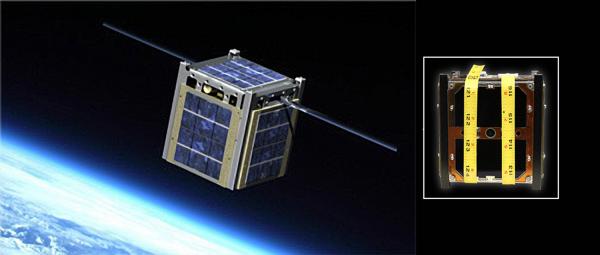This is the third installment of our Q&A with Art + Technology Lab grant recipient Julia Christensen. For the past eight months, Julia has been working with Jet Propulsion Laboratory's (JPL) A-Team to envision an artwork for a long-term interstellar space mission.
What happened at your first meeting with the A-Team at NASA’s Jet Propulsion Lab?
The first A-Team meeting that I participated in totally blew my mind. The session’s purpose was to develop my ideas for an art project to be embedded in an interstellar spacecraft concept, which would travel to Proxima B, an exo-planet 4.2 light years from Earth. The A-Team coordinators pulled together experts from a range of fields, including artificial intelligence, robotics, spacecraft engineering, systems engineering, exo-planet science, etc., and we spent an 8-hour day discussing design and intentions for this art/space project. There is nothing I love more than a full-on brainstorm session about a wild art project, and to hold one with a group of literal rocket scientists at NASA’s Jet Propulsion Lab was one of the greatest experiences of my life. By the end of the day, we were discussing an art project that could possibly manifest as an intergalactic gallery, with sculptures marking the path of the spacecraft, or light projections, or radio projections, or even small pieces created by robots on board the spacecraft. During that first A-Team meeting, we blew the ideas wide open, expanding the context of art in space.
And how has your collaboration at JPL expanded since that first meeting?
Since that day, we have held several more A-Team meetings, and the original mission concept has expanded to a series of, potentially, three missions: 1) the future interstellar mission to Proxima B, 2) a potential mission to 550 astronomical units (AU) in the other direction, which would provide a “gravitational lens”––effectively a giant universal telescope created by the gravity of the sun––allowing for high-res imaging of Proxima B, and 3) a small CubeSat mission, now, that will inform science we need to accomplish the future missions.
What challenges have you encountered during the project? How did you overcome them?
We have identified a number of obvious challenges that pose systems issues for the interstellar mission: propulsion, AI, etc. But there is one major challenge that is perhaps the most elusive, and yet the most difficult to strategize: the very longevity of our material technology and communications systems. The journey to Proxima B will take at least 40 years, and we’d love for the ship to be operational long after that, so we can continue to receive data from the spacecraft for decades beyond. How can we possibly build an electronic vessel that can reliably operate for that long? The longevity of our space-bound technology is something we can begin to test now, using a relatively inexpensive CubeSat.
We decided to attempt to design a CubeSat that can operate for at least 200 years. Over the course of 200 years, scientists will retire, USB ports will come and go, and generations of humans will die. But there are organisms on Earth that will live to see the entirety of the 200-year mission––including live trees. It turns out that you can harness the electrical current in a tree to turn it into a radio transmitter and receiver, at a frequency that CubeSats are able to use to communicate. We’ve decided to augment a series of live trees around the Earth to send constant data about their environmental conditions to the CubeSat––for 200 years!––and the CubeSat will send data about its environmental conditions back to the trees. We will sonify that data, so that effectively, the trees and the spaceship will sing to each other for centuries about changes in their health and surroundings. The songs will be available online, open-source, for downloading and mixing, and at the site of the trees. Each year, we can inscribe the sonic data into a disk, representing tree rings, or a “Golden Record” 2.0, told from the perspective of trees and the technology we deploy in space. The mission is called The Tree of Life.
How do you see this collaboration with NASA scientists as a fluid component of your art practice?
My collaboration with JPL began in the context of my ongoing art project, Upgrade Available, a series of art pieces that explore the challenges posed by obsolescence in “upgrade culture.” The process of designing a 200-year spacecraft delivers an incredible culmination to this years-long research, as my artistic vision drives a collaboration developing technology that actually outlives the cycles of obsolescence that have come to dominate the 21st century. The spacecraft and technology that support The Tree of Life mission, and eventually, the mission to Proxima B, transcend all of these short time cycles––this is technology that exists on planetary time, or even space-time.
If anyone can design digital technology that can orbit the Earth and continually function for 200 years, the visionary scientists at JPL can. Once we accomplish this feat, theoretically, we can open the door for other designers to create technology that also centers on longevity. As we face the global environmental crisis of e-waste, and the related health and labor issues, it is time we challenge ourselves to design technology that has longevity as a primary goal. On planet Earth, trees can last for 200 years, or longer. Shouldn’t our spaceships be able to operate for that long too?
The Art + Technology Lab is presented by:
The Art + Technology Lab is made possible by Accenture and Snap, Inc.
Additional support is provided by SpaceX and Google.
The Lab is part of The Hyundai Project: Art + Technology at LACMA, a joint initiative exploring the convergence of art and technology.
Seed funding for the development of the Art + Technology Lab was provided by the Los Angeles County Quality and Productivity Commission through the Productivity Investment Fund and LACMA Trustee David Bohnett.




